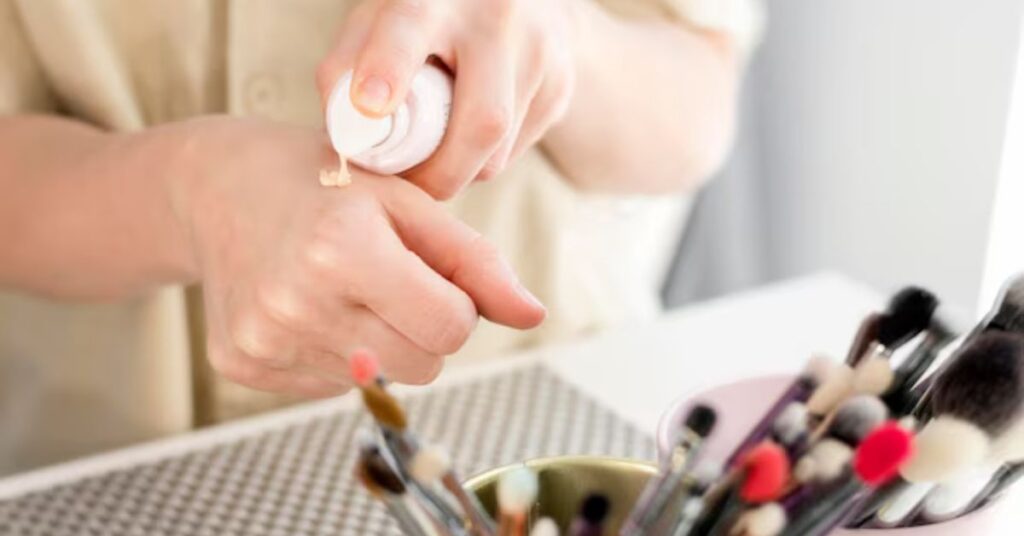A primer is basically one of the most important pieces in the makeup industry since it prepares the perfect smooth ground under the layer of foundation long-lasting, although people make an array of various primer mistakes. For a perfect, flawless finish achieved with makeup perhaps lies in appreciating these pitfalls and perfecting them. Thus, this article would reflect on the eight most common primer mistakes of the people and their solutions they have to bring for these to achieve perfect, glossy finish always.
Missing Primer Step
The most common error in using primer is missing essential application steps altogether. A primer mistakes creates a protective barrier between your skin and makeup, which allows your foundation to last for hours longer than it would normally. Without a primer, your makeup sinks into fine lines, pores, or dry patches, giving the face an unappealing finish.
Always apply primer, no matter your skin type. A hydrating primer works wonders for dry skin, while a mattifying primer helps control oil for those with oily skin. No matter your choice, primer mistakes always creates the flawless canvas that the rest of your makeup needs.
Applying Too Much Primer
More is not merrier when using primer. You put too much and your makeup just slid and slid around all day; by the time you reach its end, the finish becomes an unnatural cake. primer mistakes also clogs up pores, causes breakouts.
Use a pea-sized amount of primer. A little goes a long way, so you really do not need much to cover your face; if you have specific problem areas like the T-zone or large-pored zones, use more on those areas. primer mistakes can easily be avoided by not overapplying
Wrong primer for your skin type
The most common primer mistakes of primer use is choosing the wrong primer for your skin type. For instance, putting a mattifying primer on dry skin will make it seem nearly patchy and flaky in parts. On the other hand, a hydrating primer may turn oily skin to be really greasy such that your makeup becomes ready to slide off.
Fix: Always use primer according to one’s skin type. One has oily skin; there is a priming agent meant to dampen shine for that type. If one falls under the dry skinned category, he or she should opt for hydration priming products for nourishing his or her skin. Those having large pores have to opt for a pore-filling primer that would mix well with textures. Another primer mistakes to avoid is not choosing the right formulation for your skin concerns.
Primer on Wet Skin
Most of the people make the mistake of applying primer on damp skin. The effect will be that the primer slides off, it won’t adhere to your skin, and this means the foundation will either slide off after some time or uneven application of makeup.
Fix: Make sure to let your skin dry out totally before applying primer. Let it dry for a few minutes after moisturizing, and let the skin soak in the moisturizer, allowing a smoother application of your primer.
Applying Primer Before It is Set to Drying
It is a temptation to hurry through your makeup routine, but applying foundation before the primer has time to dry can cause streaks or separation in your makeup. primer mistakes needs to dry and set on the skin before you apply your foundation.
Apply primer, wait for a few minutes for it to set and dry, then apply foundation. This enables the primer to bind fully with your skin, and also helps to provide a smooth surface for makeup application. Another primer mistakes to avoid is rushing this essential step.
Application of Primer to Specific Parts

Some are guilty of the primer sin, which is application of the primer only in certain areas. For example, they apply it only to the T-zone or those areas containing large pores. That may be the best way to save product, but uneven coverage and an imbalanced makeup application will be the other result.
Cover the entire face, even the portions with large pores, and apply makeup over that. Unless huge portions of your face are the pores, simply make sure you cover your face entirely. That is, regardless of their size, coating up the makeup you would wear with an increased sense of durability is great in its order.
Poor Texture
Gel and cream are the most basic types of textures applied to primers, which are also silicone-based textures. Wrong application of texture makes one of the common primer mistakes through which poor performance is achieved for example, application of silicone-primers, which may result in poor functionality on dry-skin, and Hydrating formulae, and even worse, such a primer in oily skin condition. Another primer mistakes is using the wrong texture for your skin type, which can lead to uneven results.
Reflect on what your skin actually needs while choosing a primer texture. Someone who actually has really oily skin is far better off making use of the gel ones. While cream and hydrating primer best suits the time when the case is really dry. Normal-skinned people only need to experiment around to figure out what works better.
Removing Primer Wrongly at the End
It includes a good example of mistakes that happen when pores clog up because it was not properly removed or because it causes breakouts and irritated skin. Generally, applying it at night is a common scenario, especially using silicones or other potent ingredients, which does not let your skin breathe with it and ends up causing these skin issues.
It should be a routine to take off all makeup from your face at the end of the day. You may have used the tiniest makeup, but still, you have to remove all primer and makeup using gentle makeup remover before proceeding to use a cleanser so that your skin is clean enough.
FAQ Section
Q1: Am I allowed not to use a primer if my foundation is a full coverage?
A: Use a primer, even if you use a full-coverage foundation. It makes for a smoother base, and the makeup stays put the entire day.
Q2: What are the right options of primers that one can opt for in respect of one’s skin type?
A: If the skin is oily, then go for a mattifying primer that reduces shine. Dry skin will need a hydrating primer to moisturize. If there are large pores, then apply a pore-filling primer, which fills out pores to make your skin look smoothened.
Q3: How long does one have to wait after applying primer on the skin to put foundation on?
A: Allow the primer to dry for 1-2 minutes before you apply your foundation. This allows the primer to be fully absorbed, thus giving you a smooth base.
Q4: Can I apply primer by itself with my fingers?
A: Of course, you can use it with your fingers. You just have to make sure that you blend the primer evenly on the places where you need it the most, especially on the T-zone or areas that have visible pores.










Leave a Reply